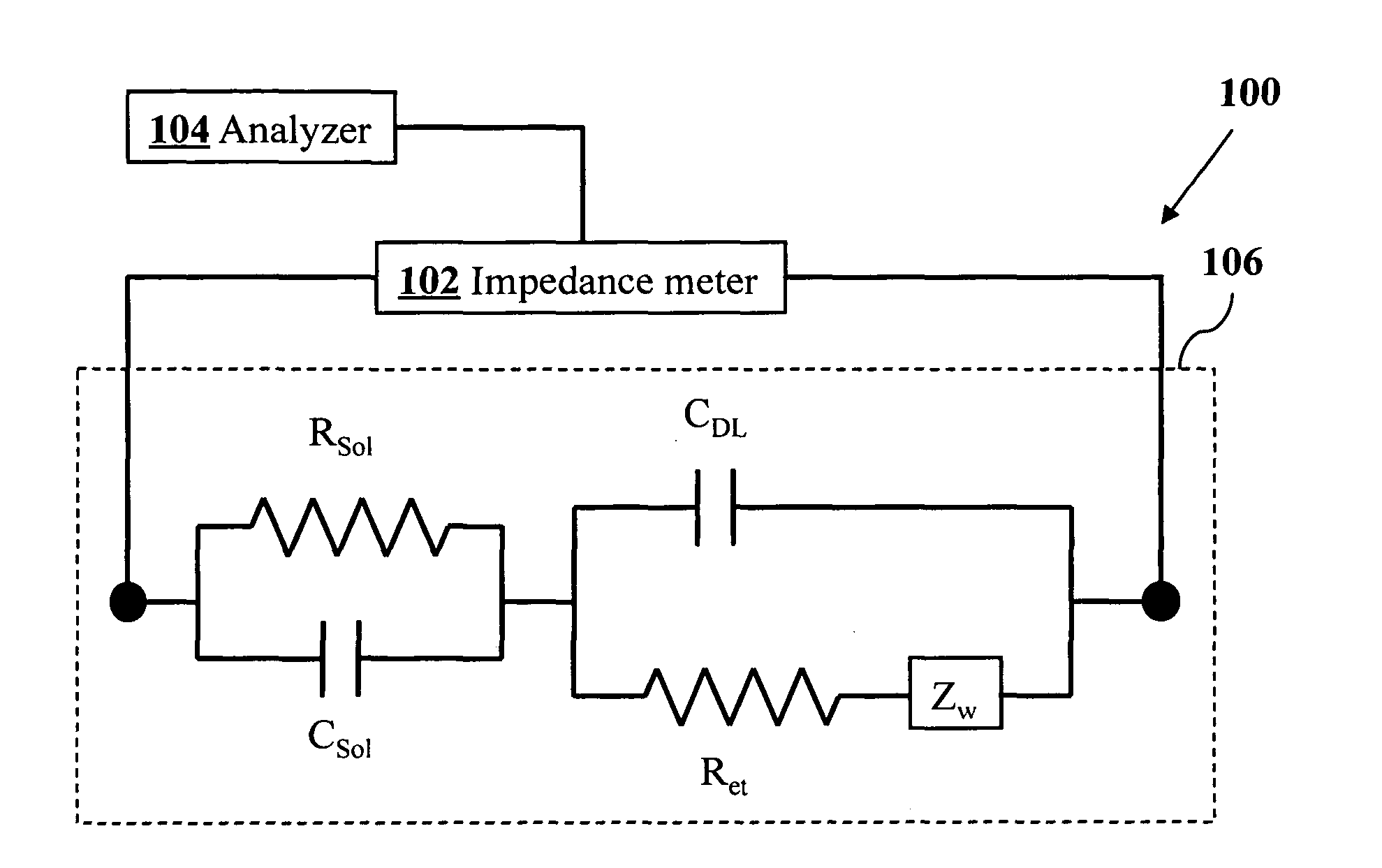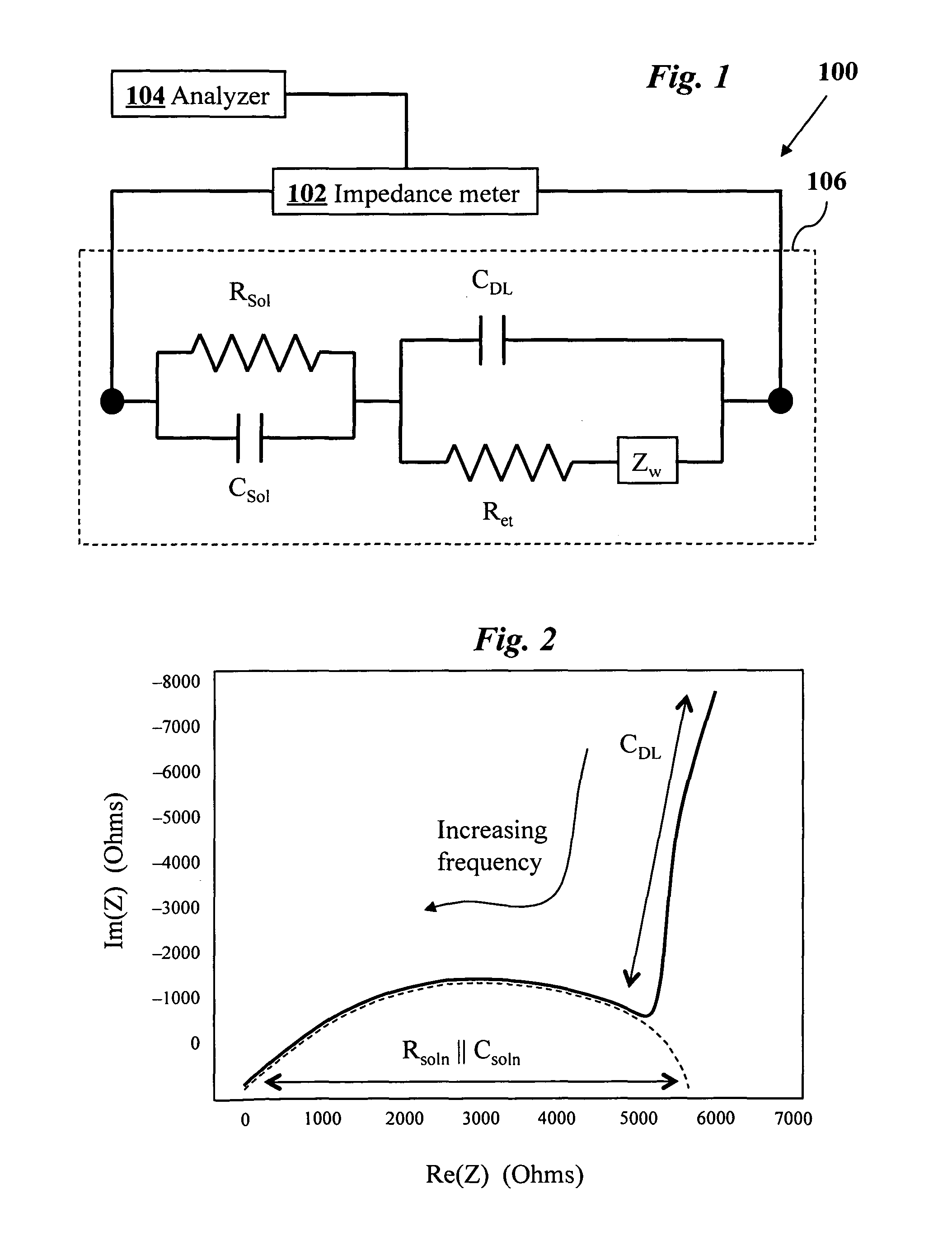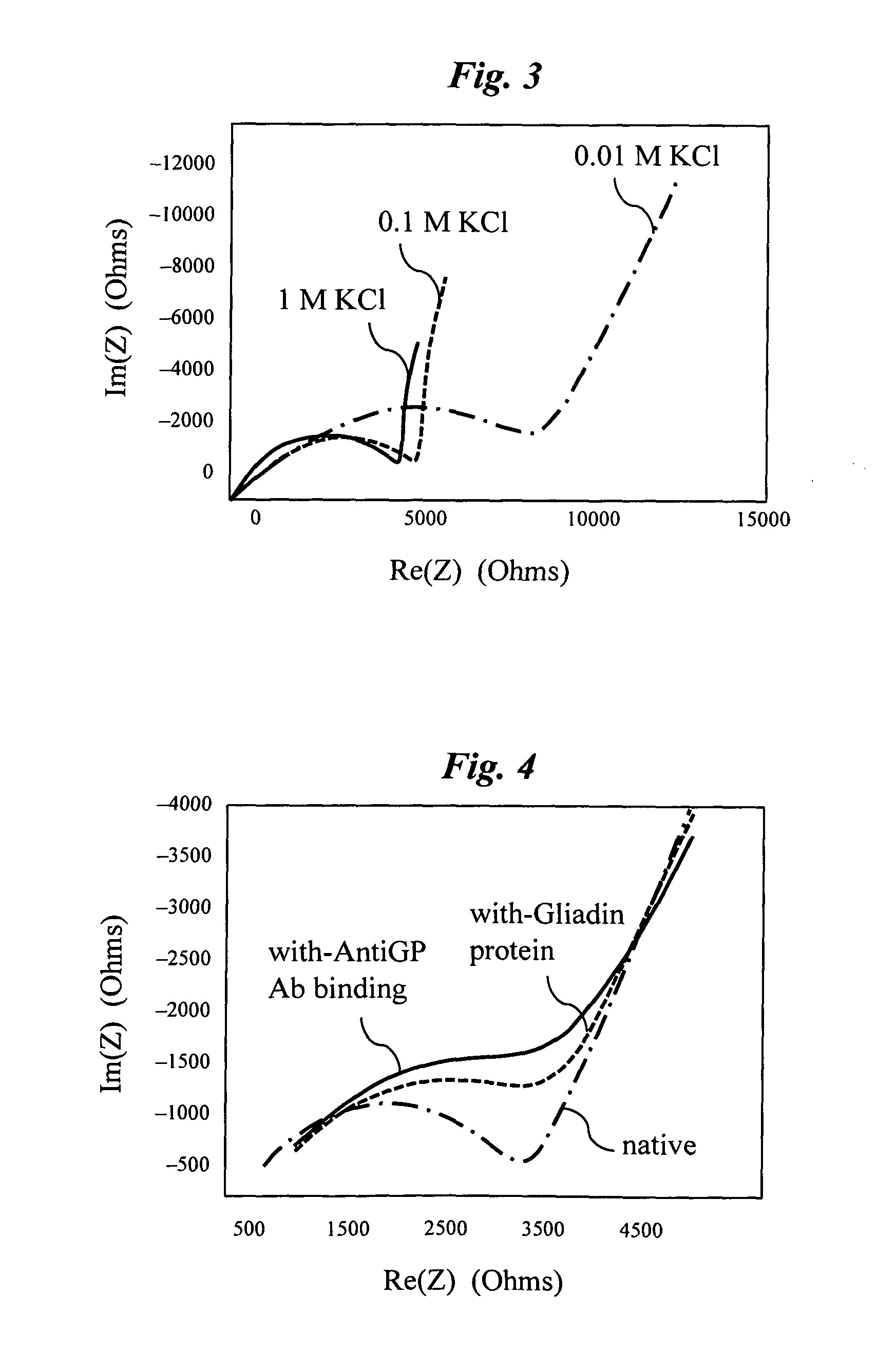Impedimetric sensors using dielectric nanoparticles
- Summary
- Abstract
- Description
- Claims
- Application Information
AI Technical Summary
Benefits of technology
Problems solved by technology
Method used
Image
Examples
Embodiment Construction
[0019]An impedimetric sensor 100 according to one embodiment includes interdigitated electrodes connected to an impedance meter 102 as shown in FIG. 1. For small applied voltages (i.e., tens of mV), an equivalent Randles circuit 106 may be used to model the circuit for the impedimetric sensor. Prior to the impedance measurement, an analyte is immobilized on the surfaces of the electrodes. During impedance measurement, the bare electrodes are exposed to a buffer solution having resistance RSol and an AC probe voltage V(t)=V0+ΔV sin (2πft) is applied to the circuit. In response to the applied voltage, a double layer of charges is produced near the electrode surface, resulting in a double-layer capacitance CDL which will depend upon the amount of analyte attached to the electrode surface as well as on the intermediate binding or self aligned molecules (SAM) and the analyte The circuit is also characterized by a Warburg impedance Zw, which can arise from mass transfer, and electron tran...
PUM
| Property | Measurement | Unit |
|---|---|---|
| Frequency | aaaaa | aaaaa |
| Frequency | aaaaa | aaaaa |
| Frequency | aaaaa | aaaaa |
Abstract
Description
Claims
Application Information
 Login to View More
Login to View More - R&D
- Intellectual Property
- Life Sciences
- Materials
- Tech Scout
- Unparalleled Data Quality
- Higher Quality Content
- 60% Fewer Hallucinations
Browse by: Latest US Patents, China's latest patents, Technical Efficacy Thesaurus, Application Domain, Technology Topic, Popular Technical Reports.
© 2025 PatSnap. All rights reserved.Legal|Privacy policy|Modern Slavery Act Transparency Statement|Sitemap|About US| Contact US: help@patsnap.com



